An Open Letter to Richard Dawkins
or
Why Richard Dawkins Is Wrong (about… everything)
Addendum: I add the parenthetical to the title because if Dawkins is wrong about random mutation/natural selection being the cause of macro-evolutionary change (as the formation of the eye), we might as well say he’s wrong about everything. Hang in and you will understand why this is true.
Professor Dawkins,
I’ve read two of your books, The Blind Watchmaker and The Selfish Gene, plus I have listened to many of your lectures and debates. I have also studied the works of those who disagree with you — on the process of evolution, not necessarily regarding change over time/descent with variation/common ancestry. I have also heard you state that those who do not agree with you are ‘either stupid, ignorant, dishonest, or even evil,’ and am offended by being thusly labeled, since I do not agree with you. You pull no punches, Sir, so I will likewise not hold back in this open letter to you.
As stated in my previous post, the essence of Darwinian evolution — as opposed to ‘change over time’ or ‘common ancestry’ – is that it lacks foresight, i.e., genetic mutations are truly random; when a mutation occurs, there is no plan as to further mutations. Evolution does not ‘know’ anything. Anything.
To be specific (which Darwinists including you, sir, only rarely do), I agree with you that the fully formed animal eye, say, the human eye, formed very gradually, over many generations and possibly over many ‘lower’ species.
But you also claim that at no point in the step-by-step process, was there ever any sort of plan as to final morphology or purpose. And in that step-by-tiny-step process, each and every step must be of selective advantage. This last bit is so very important, as I know you would agree. It’s a bit of a shame that Charles Darwin left that caveat out in this extremely important quote:
“If it could be demonstrated that any complex organ existed [like the eye], which could not possibly have been formed by numerous, successive, slight modifications [all of which must have selective advantage], my theory would absolutely break down.”
 I will assume – and I know this to be true – that you would agree with my insertions. In any event, let’s assume so for now. There was a bit more to the above quote, so in fairness let’s include it:
I will assume – and I know this to be true – that you would agree with my insertions. In any event, let’s assume so for now. There was a bit more to the above quote, so in fairness let’s include it:
‘But I can find no such case.’
As you have often stated, sir, you can likewise find no such case, but I can. In fact, many cases. But according to both you and your Mentor, one is all we need, and as I say I’m going with the eye, since it still gave Darwin himself the shakes (and for good reason):
‘The eye to this day gives me a cold shudder…’ (Darwin, later in life)
And I believe I will make more than one argument against both you and your Hero that has hitherto never been made. We’ll see.
To any lay person who has ever examined the exquisite complexity of the eye, the idea that it arose from random process sounds not only counter-intuitive, but against simple common sense.
Professor Dawkins, I will herein show whence this counter-intuitive feeling springs, even given your disagreement with it. I will show you that the evolution of the eye (as representative of the evolution of any organ or body plan) cannot possibly have occurred in the fashion you espouse in your books and lectures, i.e., via random mutation/natural selection.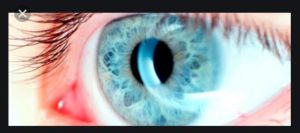
Right: We’ll see. First, let’s quote your Master again:
To suppose that the eye with all its inimitable contrivances for adjusting the focus to different distances, for admitting different amounts of light, and for the correction of spherical and chromatic aberration, could have been formed by natural selection, seems, I freely confess, absurd in the highest degree.
Calm down, sir! I know you are (at least metaphorically) screaming in my face that this quote is taken out of context. Okay, so let’s let The Big D continue on:
When it was first said that the sun stood still and the world turned round, the common sense of mankind declared the doctrine false; but the old saying of Vox populi, vox Dei, as every philosopher knows, cannot be trusted in science.
 Well put, isn’t it, sir? Thing is, your Master is misleading us here, since it was not only ‘the common sense of mankind’ that was completely wrong on old time astro-physics, but all of mainstream science as well. Hey, I’m just sayin’…
Well put, isn’t it, sir? Thing is, your Master is misleading us here, since it was not only ‘the common sense of mankind’ that was completely wrong on old time astro-physics, but all of mainstream science as well. Hey, I’m just sayin’…
Reason tells me, that if numerous gradations from a simple and imperfect eye to one complex and perfect can be shown to exist, each grade being useful to its possessor, as is certainly the case; if further, the eye ever varies and the variations be inherited, as is likewise certainly the case and if such variations should be useful to any animal under changing conditions of life, then the difficulty of believing that a perfect and complex eye could be formed by natural selection [based on random mutation], though insuperable by our imagination, should not be considered as subversive of the theory.
‘(T)hough insuperable by our imagination…’ It’s interesting that elsewhere in The Origin of Species – and since then by Darwinists like you up the wazoo – The Master uses the phrase (or some such like it) ‘I can imagine…’ preceding a ‘scenario’ of something leading to something else. Yet here we have an example of ‘insuperability’ (on top of ‘absurd to the highest degree’). And recall that we need just one example and the theory ‘would absolutely break down.’ Again, just sayin’.
(Darwin again): How a nerve comes to be sensitive to light, hardly concerns us more than how life itself originated; but I may remark that, as some of the lowest organisms, in which nerves cannot be detected, are capable of perceiving light, it does not seem impossible that certain sensitive elements in their sarcode should become aggregated and developed into nerves, endowed with this special sensibility.” [All my emphases]
(In the spirit of ‘Just sayin’: ‘(I)t does not seem impossible’ seems a weak qualification in support of a theory telling us how we got here.)
I know: I keep quoting Darwin when it’s you, Professor Dawkins, I’m really after. Suffice to say that you should so far have no problem with my little essay, or at least you can have no complaint that I’m quoting your hero out of context.

This is the sort of creature (euglena) Dawkins figures fired up the beginnings of the eye. Okay, let’s try that…
Sir, please keep in mind (re the last quote) that your Master is still referring to the eye, and that he is telling us that ‘lowest organisms’ are ‘capable of perceiving light’; he then refers to sight as ‘this special sensibility.’
Professor Dawkins, it appears that you often language like ‘capable of perceiving light’ in ‘proving’ that the eye arose with no foresight by ‘the process’ of Darwinian evolution. Given this, I believe we should define our terms. Indeed, as we’ll find in this controversy, the devil is in the terminological details.
I assume you agree that vision is indeed ‘a special sensibility’ and that it is synonymous with ‘capable of perceiving light.’ I would ask you, Sir (plus my kind readers), to keep this Darwin-uttered phrase in mind (referring to primitive creatures) as we look at a little montage of you telling us about the eye and how it arose from a random process (yes, yes, I know: ‘A random process plus natural selection):
Now, your having gotten at least an idea of where I’m going with this Open Letter, let’s play a game of Q&A, with me making educated guesses on your responses to my questions/observations. (I would like nothing better than your correcting me where I go astray in the following):
Allan Weisbecker: First, let me quote from one of your video clips:
‘Here for example is euglena, which is a single celled organism, just has a little eyespot at the head end of the cell and that eye spot is sensitive to light, so it can’t form an image, it can’t see anything. All it can tell is whether it’s light or dark. So that could be a first step.’
You and others in the video montage use terms similar to ‘it can tell’ or ‘it can discriminate ’or ‘differentiate ’or ‘it can know’ regarding a single-cell creature and the first step towards vision. Please explain what you mean.

As in our video, in this one Dawkins likewise needs complex equipment to demonstrate what a mindless microbe would ‘see.’
Richard Dawkins: That’s short hand for ‘light sensitive,’ ‘sensitive’ being defined as ‘able to react to environmental stimuli’; in this case, light.
AW: How does the eyespot do that?
RD: Chemically, the basic light-processing unit is likely a light sensitive specialized protein called opsin. A primitive eyespot permits organisms to gain only a very basic sense of the direction and intensity of light, but not enough to discriminate an object from its surroundings.
AW: Again you call it an ‘eyespot’… Okay… Let’s assume the sudden appearance of a light sensitive spot on a simple organism’s skin, or outer membrane, depending on its complexity. (Euglena being a good example, often used by Darwinists, including you, Sir.) What’s the selective advantage?
RD: As mentioned in the video and elsewhere, the organism can tell where the light is coming from.
AW: Again you say, ‘Can tell’… It would seem that this one-celled, brainless creature is processing information.
RD: I suppose that in a very simple sense, it is.
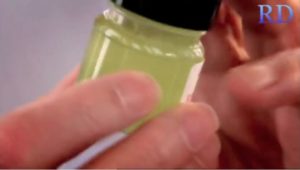
Dawkins has some one-celled euglenas in the jar. He likes to describe the little creature’s ‘inner life,’ i.e., what it ‘knows’ and ‘sees’ and how it figures out where the light is.
AW: Really? Please explain how the information processing works, showing how the eyespot gives selective advantage. Let’s assume – although it could go either way – that the organism would better survive in darkness because light is damaging to its DNA. This is mentioned in the video regarding euglena.
RD: As the organism moves away from the light, it will sense the light getting dimmer and continue going in that direction–
AW: There you go again, saying, ‘it will sense’ the light…
We are assuming that the organism (like euglena) has never before had an eyespot and now a ‘random mutation’ has given it one. I would submit that as a neo-Darwinian who believes in random mutation as change-initiator, you must be able to show even just in theory how the organism (or any organism) is going to gain selective advantage from the ‘light sensitive’ spot it was just now ‘randomly’ blessed with. To be more specific: How would the euglena ‘know’ what the light means?
RD: As I say in the video, the euglena is now equipped with light-sensitive–
AW: You’ve already said that; repetition is not explanation. It would seem to me that this supposedly ‘light sensitive’ patch can only be of selective advantage if its immediate and sudden presence causes the creature to move in a direction where ‘things are better’ in a real, life-preserving or enhancing sense. Otherwise there would be no biological reason to pass the mutation along to the next generation, and the ‘start of the eye’ would go Poof! Surely you agree here.
RD: In principal I agree but you’re over-analyzing what is meant as an example of–
AW: But let’s back up and see what we really have, and what that might imply. We have a creature that at least up until now has never experienced light in the visual part of the spectrum but now has a patch that… hold on a minute. Let’s bring back a relevant quote from The Man himself:
How a nerve comes to be sensitive to light, hardly concerns us more than how life itself originated; but I may remark that, as some of the lowest organisms, in which nerves cannot be detected, are capable of perceiving light, it does not seem impossible that certain sensitive elements in their sarcode should become aggregated and developed into nerves, endowed with this special sensibility.”
Professor Dawkins, that first emphasized passage bothers me, in that the process of ‘light sensitivity’—what it is,
how it came about, and, especially, how it would appear as a mutation (if it does appear, how often?) – would seem of great concern. Likewise, do we not need to carefully define what we mean by ‘capable of perceiving light’? I presume this phrase is synonymous with ‘it can tell’ or ‘it knows,’ when referring to light’s direction.
RD: I suppose so…
AW: Why would you (and your paradigm) assume that the creature is capable of perceiving light, given that neither it nor its ancestors has ever done so before? In fact, given that you are a scientist, in the video and in your books you do a lot of shameless and totally misleading anthropomorphizing, that is, attributing human capabilities and reasoning to a one-celled creature. I mean, why not ask it if it’s ‘enjoying life’.
RD: That’s absurd.
AW: In your video clip you have a girl squinting at a projected image that is supposedly what the euglena sees. Do you not see how absurd that is?
RD: That was just a demonstration—

Dawkins is telling her she’s going to experience ‘light’ just how a euglena does, when it’s blessed with vision for the very first time. How it will be able to ‘tell’ which way to swim. Crapola? Yep.
AW: –a ‘demonstration’ of what a one-celled creature with no brain, no nervous system at all, sees. Professor Dawkins, are you familiar with the studies of how humans react in suddenly gaining the sense of vision?
RD: No, but I don’t see what—
AW: In wondering how it might have gone with an organism’s first ‘glimpse’ of light. I’ve looked into how people who were blind since birth react when suddenly given sight – and this is after being told they would experience something new and amazing, a new way to perceive the world around them (how do you prepare them for seeing?). From an article in The New Yorker:
In 2011, Dr. Pawan Sinha, a professor of vision and computational neuroscience at M.I.T., published his answer to an almost-four-hundred-year-old philosophical problem. The philosopher William Molyneux, whose wife was blind, had proposed a thought experiment in the seventeenth century about a person, blind from birth, who could tell apart a cube and a sphere by touch: If his vision were restored and he was presented with the same cube and sphere, would he be able to tell which was which by sight alone? The philosophical camps on Molyneux’s question divided roughly through the centuries into those who believe that certain qualities, such as the roundness of spheres, are innate and shared among the senses (the Yeses), and those who insist that, to understand roundness, the eyes must have already seen roundness (the Nos). [End quote]
I was immediately in the ‘No’ camp, and it turned out I was right. It took weeks for the newly sighted to ‘understand’ what visual images represented, what they meant. They had to learn to tell a cube from a sphere visually, for example, which they could do perfectly when blind, by their sense of touch. I emphasize the time element, i.e., weeks, because a newly acquired feature. i.e., the eyespot, must be of immediate selective advantage for your definition of evolution to work.
To re-formulate the point: You – as a neo-Darwinian – have to show how a sudden new sense would lead to altered behavior, and how that behavior would be of selective advantage.
At the level of phenotype, you need to show the physical connection between the ‘eyespot’ and the nervous system (although euglena doesn’t even have a nervous system) and then in turn with the mode of movement of the organism (with euglena, a flagellum), in order to merely show the physical possibility of altered behavior, let alone the selective advantage.
RD: But you see, the light sensitive eyespot—
AW: by the way, sir, given you’ve branded me stupid, ignorant, dishonest, or evil, you have some nerve calling it an ‘eyespot’ when all it’s doing is chemically reacting to light of a certain wavelength.
Addendum: In subtext, the term ‘eyespot’ infers ‘planning ahead’— knowing that an eye ‘is coming’—which is misleading, given that in Darwinism, no such planning or seeing the future is allowed.
Seems to me that if a euglena had any response to some new, sudden chemical reaction zapping it on its ‘head’ (as you refer to it in the video), the reaction would be some sort of primitive agitation. The idea that it would say to itself, ‘Oh, so that’s the direction the light is coming from! I better go the other way!’ is beyond absurd. It’s either stupid, ignorant, or dishonest. I’ll give you a pass on ‘evil.’ This is in effect a lie, which you repeat over and over in your various propaganda.
RD: I don’t care to be insulted by—
AW: –getting back to your theory on the beginnings of the eye, the best you can hope for with your eyespot-randomly-appearing-out of nowhere, is if in addition to the almost (and I have to say it) miraculous appearance of the eyespot, you have another, simultaneous mutation occur that somehow connects the eyespot to euglena’s mode of movement (the flagella), although just where and how the ‘processing of information’ takes place — since the creature has to ‘know’ that the eyespot’s chemical reaction is related to the location of the light source – is likely a paradigm-busting issue on its own.
And the odds of two simultaneous, selective advantage-giving mutations occurring simultaneously, are… well, let me quote one of your ‘favorite’ I.D. folks, Dr. Steven Meyer:
‘Have you ever seen a mutation simultaneously affecting two separate components of the body and producing structures that fit one another precisely? … have you ever beheld three, four or five simultaneous mutations with matching structures producing coordinating effects? … How many chance occurrences would it take to build this extraordinary creature [or organ, such as the eye?] [Myrmelion formicarius]’? [Note: I lost this link]

See that line going off to the left? That’s meant to be a nerve. This would be a SEPARATE mutation from the eyespot, and would have to occur simultaneously for the eyespot to be of selective advantage. The odds against this are… more than astronomical.
Although I’ll soon get deeper into probability theory, Dr. Meyer’s point is that as soon as you need two (or more) ‘coordinated’ mutations – in this case the eyespot plus some mechanism to ‘connect’ it with behavior – you run into numbers like… well, to quote Dr. Meyer once more:
If one also factors in the probability of attaining proper bonding and optical isomers, the probability of constructing a rather short, functional protein [an eyespot being a protein] at random becomes so small (1 chance in 10^125) as to approach the point at which appeals to chance become absurd even given the “probabilistic resources” of our multi-billion-year-old universe.
Actually, the above odds are best related to finding the ‘eyespot’ mutation on its own, let alone pairing it with another mutation, wherein you’d have to multiply the two numbers, as in 10^125 times 10^125.
Once you see it this way, you realize how astronomically improbable (physically impossible) it would be to have all the mutations necessary to occur by random chance, since they would all have to appear simultaneously. To repeat: A ‘light sensitive’ protein (or cell or group of cells) with no means by which to affect behavior is not sufficient to afford selective advantage. It therefore ‘dies on the vine’ evolutionarily.
Addendum: When you so glibly describe how evolution ‘works’ you never mention the fact that whatever mutation you are describing – here, the eyespot appearing on euglena – the mutation is a ‘one-off’ event, occurring on a real, single little creature, out there in the world. A valid question: What are the odds that the eyespot mutation will occur to this individual creature? Although in practice, the question may not be (with the current science) answerable, it is a real, not theoretical, question, with a real, numerical answer; a number perhaps like Dr. Meyer’s 1 chance in 10^12 for ‘the probability of constructing a rather short, functional protein’. Surely, the odds here are not far from those he quotes. Something like winning the lottery multiple times.
AW: Have you ever seen or heard of the mutational appearance of a ‘light sensitive’ patch appearing on a primitive animal, or animal of any kind? In the laboratory or elsewhere? Are there peer reviewed papers on this?
RD: Well, no, but surely we can imagine–
AW: There you go again with ‘surely we can imagine.’ What sort of science is based on imagining the root cause of an organ as complex as the eye? Not to mention assuming an event (the claimed mutation) that no one has ever witnessed or measured or calculated the frequency thereof.
RD: There is nothing impossible about a light sensitive protein mutation.
AW: My next question was going to be about probability. You know, odds. What are the odds that a light sensitive patch mutation would occur on, say, euglena. But it would appear that the probability — as far as you know — would be… zero.
RD: No, it would not be zero.
AW: How do you know? This is science, Sir.
RD: Because eyes exist! How else–
AW: That’s circular reasoning. Presuming the truth of the matter at issue.
RD: How else would the eye form but starting with a light sensitive patch mutation?
AW: How about a ‘gamma ray sensitive patch’ mutation? Do you think out of all the random mutations that ‘surely we can imagine’ that maybe preceded the ‘visible light sensitive patch’ for euglena, evolution gave ‘gamma ray sensitive’ a try?
RD: Well, if such a thing were possible…
AW: Why wouldn’t it be possible? What’s so special about visible light (or ultra-violet light)? It’s on the same spectrum as gamma rays. Or X-rays… or for that matter, radio waves. I mean if there is no plan or foresight to evolution, why would it favor ‘visible light’ sensitive? After all, according to you, life is just the meaningless laws of physics and chemical forces doing their random thing.
RD: Okay, if a gamma ray sensitive patch were possible, it might have been tried and found of no selective value.
AW: How about a swastika patch?
RD: You’re being absurd.
AW: No, I’m just following the logic of evolution working in a completely random fashion, with no plan and no foresight. Why can’t you imagine a patch shaped like a swastika on a euglena’s ‘head’? Or my initials? Or how about ‘C.D.’ for ‘Charles Darwin’? Do you think euglena gave those a try before it stumbled upon a ‘light sensitive’ patch?
RD: I don’t see the point of this. The absurdities you mention would all be rejected by natural selection.
AW: I’m just showing how busy the mutation mechanism would be, trying out all sorts of useless stuff.
RD: But they’re all absurd.
AW: Nothing would be absurd to a random process. Besides, you’re the one who repeats the phrase ‘surely you can imagine’ before you theorize the appearance of some new biological characteristic. ‘It’s not impossible,’ ‘it might be possible,’ ‘it could happen,’ and so forth. It’s tiresome, hearing that crapola, by the way. Kipling did it so much better with his ‘Just So’ stories.
RD: If you’re going to continue to insult me…
AW: Like calling someone ‘either stupid, ignorant, dishonest, or evil’?
RD: Anyone who doesn’t accept evolution–

No one has ever witnessed or measured or calculated the frequency of an ‘eyespot’ mutation, yet Dawkins claims it’t the ‘first step’ in the evolution of the eye. Is something amiss here?
AW: If the first step of the process is truly random, there should be no favoritism toward the appearance of biologically favorable traits like ‘a light sensitive patch.’ I find it incredible that you ‘imagine’ the appearance of ‘an eyespot,’ given that no one has ever witnessed the phenomenon, not in the laboratory, not anywhere else. You refer to your version of evolution as a ‘fact’ and as ‘proof’ you have to imagine things never witnessed.
RD: Talk of gamma ray patches and swastikas is ridiculous!
AW: Professor Dawkins, I’m just showing you where your logic and your random process leads, i.e, to places you’ve never thought to consider.
Addendum (from 9/23/19): I was just swaying in my hammock re-listening to Michael Behe’s Darwin’s Black Box (a book I cannot too highly recommend). He talks about his daughter’s toy fish that swims in the bathtub, and lists all the mechanisms (four, I think) that have to be in order for the toy to be operable. This is his ‘irreducible complexity.’
In our case (the selective advantage of an ‘eyespot’), the exact same principle applies, in that a Darwinist has to ‘connect’ the eyespot to ‘swimming’ — which would mean multiple simultaneous mutations of just the right sort (statistically impossible) — and even this point leaves out the whopper issue of how the creature ‘knows’ what the light patch means.
Darwinism sounds so good, so in tune with a materialist worldview, that devotees just ‘hand wave’ away issues like those delineated in this essay.
TWO EYES ARE BETTER THAN ONE (but how did it happen?)
AW (continuing after RD took some aspirin): Professor Dawkins, if I were to ask you why (in the Darwinian sense) animals have multiple eyes – the vast majority having two – you’d probably say something about depth perception and binocular vision being of selective advantage, right?
RD: Yes, correct. I believe all vertebrates have two eyes, although some more primitive species have more than two.
AW: But you’d agree that the evolution of the eye started with one.
RD: Yes, but fairly soon after the first eye appeared, the second eye evolved, the advantages of vision being so powerful.
AW: Okay, but let me ask you a simple question: When the second eye evolved, did it have to start from scratch?
RD: I don’t think I follow.
AW: The second eye evolved via random mutation and natural selection, right?
RD: Certainly, yes.
AW: Well, did it have to start all over again in the evolutionary process? As you describe in the video, starting with a randomly appearing light sensitive patch? Then the random processes filtered by natural selection continued. Right?
RD: Right. Yes, that makes sense. After the first eye was of very obvious selective advantage.
AW: So I repeat the question: Did the second eye in its evolving from nothing, have to start from scratch?
RD (hesitant): Yes, of course it did. Start from scratch. Evolution has no foresight.
AW: Or memory. It doesn’t remember anything it’s done before.
RD: Of course not. That would be against the whole Darwinian idea…
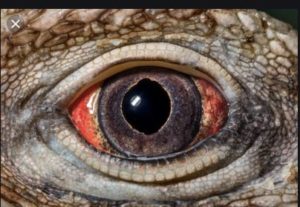
Since the eye has supposedly evolved multiple times and if the process is random, how come both eyes on any given animal match in design? Just asking. Got an answer, Prof?.
AW: How many times have eyes independently evolved in the history of life? I’ve read as many as 40 times. Which is why some species’ eyes are somewhat different in design than others.
At this point Professor Dawkins blinks and looks away.
AW: You know what my next question is, don’t you?
RD: I… I suppose I do.
AW: I’ll ask it anyway. Just in terms of ball park thinking, what would the odds have been that when the second eye evolved it would turn out identical to the first? I mean given that evolution has no memory, and can make no plans for the future. According to Darwinism, ‘the process’ doesn’t know anything. It has no sense of what ‘worked before.’
You know, it has no foresight.
Because if it did have foresight, not only would Darwinian evolution go Poof! but so would the whole materialist, naturalist, reductionist paradigm. They’d all go Poof! Or am I missing something?
RD (weakly, almost by rote): Creatures with two eyes have an advantage over those with only one…
Folks with one eye get along fine, and learn monocular cues to depth perception. Yes, a two-eyed creature has an advantage over a one-eyed one but the point still remains: According to Darwin, the second eye would have no ‘memory’ of the first eye as to how to build itself, so would have to start from scratch. Given the randomness inherent in your naturalist process, there is no reason it would wind up identical to the other eye. Yet it has. So there must be some sort of plan for the eye. A design, one that is real, if not obvious to us. Not yet.
RD: Look at body plans. Four legs–
AW: That’s different: body plans did not start with one leg, given that one leg would not do the job.
RD: Maybe the second eye formed by duplicating the genes for the first eye.
AW: That may be how it happened, but that process is the very definition of design. Like the process saying, ‘One eye worked! Let’s make another!’
RD: No, no, no. Impossible.
AW: An eye design would mean there is foresight.
RD: (even more weakly): Symmetry?… I mean… it just wouldn’t look right if our two eyes were not identical in design. Bi-lateral symmetry…
AW: Symmetry, bilateral or otherwise, amounts to a design aesthetic. I’ll then ask how that fits into your materialist paradigm. Looks right? Symmetry? My God… I mean, my golly… you’re getting desperate.
RD: I suppose I am. Let me think about this and I’ll get back to you.
END OF PART ONE (I’m far from finished)
As I say, if someone can refer to me as ‘either stupid, ignorant, dishonest, or even evil’ I can let it all hang out as to how I feel about him. Which is this: Although Dawkins is partly a ‘useful idiot,’ he is also a conscious promoter of an elite agenda that goes back many generations and has evolved into a globalist power structure that has taken the concept of ‘the survival of the fittest’ to its logical extreme, and which maintains and increases its power through various levels of mass mind control and duplicity, ‘science’ being one of the main agencies of deceit.
But this is a subject for another time. The following quote from one of the Powers-That-Be (PTB) minions, Aldous Huxley (the grandson of ‘Darwin’s Bulldog,’ T.H. Huxley) will give an idea of the motive behind this agenda, an agenda that neo-Darwinism is very much a part of:
“I had motive for not wanting the world to have a meaning; consequently assumed that it had none, and was able without any difficulty to find satisfying reasons for this assumption. The philosopher who finds no meaning in the world is not concerned exclusively with a problem in pure metaphysics, he is also concerned to prove that there is no valid reason why he personally should not do as he wants to do, or why his friends should not seize political power and govern in the way that they find most advantageous to themselves... For myself, the philosophy of meaninglessness was essentially an instrument of liberation, sexual and political.”10 (my emphasis)
Huxley, Aldous, Ends and Means (New York, NY: Harper & Brothers Publishers, 1937), 270.
#
I suppose the proper title to this essay would be ‘A Fantasy Conversation With Richard Dawkins’ but my hope is to get a response from the man. I’m hoping an ‘Open Letter’ will get passed around and put pressure on him to respond; so I’ll leave it as is.



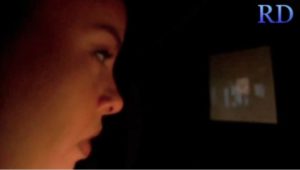
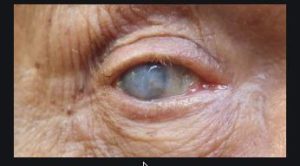
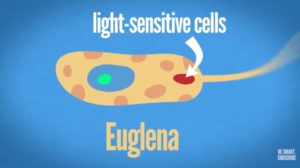




woops
here’s the link to the clip of the debate between Dawkins and the ecclesiastic Aussie …
Allan! Wow, Open Letter to Dawkins! Definitely grabbed my attention but as soon as I started reading I noticed something very strange. I had to pause and chiggity chiggity check myself b4 I wiggity wiggity wreck haha lol `°º¤ø,¸¸,ø¤º°`°°º¤ø,¸¸,ø¤º°`°º¤ø,¸¸„.-•~¹°”ˆ˜¨ ∞8∞ ¨˜ˆ”°¹~•-.„¸¸,ø¤º°`°º¤ø,¸
so…..
So right out of the gate I think there’s a problem with the premise: “Dawkins is wrong about random mutation/natural selection being the cause of macro-evolutionary change” The problem is specifically your premise regarding Dawkins position on “random mutation” Dawkins scientific position throughout all his books and life’s work is that Genetic mutation is NON RANDOM.Full Stop. Here’s a debate clip of Dawkins correcting the same “binary type error” made by his ecclesiastical, man of the cloth deliberation opponent.
I assume we can agree that genetic variance or Crossing over (genetic recombination) and random segregation during meiosis can result in the production of new alleles or new combinations of alleles & therefore if you can precisely describe that process without random models or variable measurements, then by all means, have at it.
For now I’m going pause and look some shit up… plus avoid any hasty generalizations that move too quickly through inductive arguments.
Peace out Girl Scouts
I don’t know what your first paragraph means but just b/c Dawkins SAYS it’s non- random (full stop) does not make it so. ‘Selection’ as in natural selection presumes a choice is being made when the process is actually akin to a sieve, with stuff getting thru and other stuff not. This is not a ‘choice’, so the tern NS is misleading.
All NS does is kill some organisms and not kill others. Full Stop. The first step IS random, so the ‘choices’ would be severely limited, if there WERE choices.
How about dealing with something I say. Something specific. Show how beaver dam building could possibly evolve in a tiny step by step process, for example. Cherry picking what I say and adding a video as ‘proof’ is not very helpful.